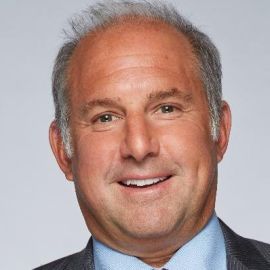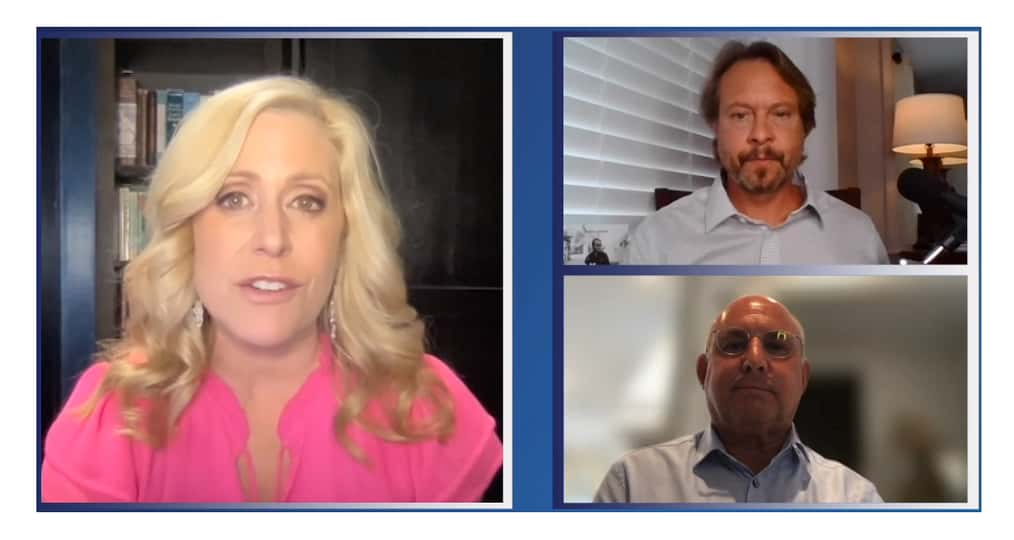Kevin Simpson, Founder and Chief Investment Officer, Capital Wealth Planning, joined host Melissa Francis, former CNBC, MSNBC, Fox Business, and FOX News anchor, and Gary Kaminsky, Former Vice Chairman, Morgan Stanley; Former Capital Markets Editor, CNBC, to discuss the Fed, interest rates, and inflation.
To watch the full interview with Kevin Simpson, in addition to interviews with Jeffrey Gundlach, Kyle Bass and Anthony Scaramucci, go to Magnifi by TIFIN.
Melissa Francis: Welcome back to Magnifi by TIFIN. Today, we are talking about oil, China, inflation, the Fed, and the best strategy is to incorporate all of that into a portfolio to grow and preserve your wealth. Joining me now is Kevin Simpson, founder and CIO of Capital Wealth Planning and Gary Kaminsky, former Vice Chairman at Morgan Stanley, former Capital Markets Editor at CNBC. Gary is also an investor and a board member at TIFIN. Welcome to both of you. Let me start with you, Kevin. I don’t know if you just heard Jeffrey Gundlach, he had a lot to say. Some of it was a little frightening. He was talking about the idea that we are heading into an era of stagflation. And he’s not alone in that, but he does think that the Fed will continue to be very aggressive as that goes on. And even as we head into a recession, he thinks that they’ll continue to raise rates and stay disciplined. Do you agree with that?
Kevin Simpson: Well, I don’t think they have much of a choice, Melissa. And it is an incredible thing to think about. I’ve been in this business for 30 years and we’re literally talking about the textbook stagflation. I mean, it’s an odd combination, a contracting economy with rising rates. And can they do it successfully, can they navigate us through that is a tremendous question. But to say that they have no choice isn’t even up for debate. I mean, we have to begin to taper this inflationary pressure and the only way for the Fed to do that is to begin raising rates. So to your point, it’s a scary proposition, but I think it’s probably the only rational choice at this point.
Melissa Francis: Boy, but that is just going to be such a tough pill to swallow. Gary, do you think that the Fed has the political will to follow through with that? I mean, I know that they are not supposed to be pushed around by what election is coming, but it’s hard to ignore all of those factors, especially if you have folks trying to get reelected. Basically, do you think the Fed has the discipline to follow through?
Gary Kaminsky: Well, I think Jeffrey made an extremely important point which was that what’s going to happen after the Fed starts raising rates, as they continue on this path that they’ve outlined, and we are in a recession, once again, cutting rates is not going to solve for economic growth. So he more or less told you, what started in the financial crisis with quantitative easing, and I can’t even remember what we’re up to, maybe Kevin can. If we’re up to QE five or six at this point, when you take the stimulus programs necessary for COVID, he basically told you that we’re going to create, once again, while we have not even gotten inflation down to the low levels that they want, we’re going to be pumping more inflation into the system because we’re going to be necessary to have further quantitative easing. To me that was scarier than the idea that we’re going into stagflation as it relates to owning assets and trying to figure out where to hide money to grow it over the long term.
Watch the full interview with Kevin Simpson HERE
Melissa Francis: So Kevin, if you believe all this, I mean, what is your strategy? How do you prepare for this?
Kevin Simpson: Well, it’s really a question of how do I keep pace with inflation? Because that’s the known entity we know is coming. We know prices are going to continue to be elevated for some time. It’s not any longer a transitory issue. I mean, it is a straight up real issue. If they can begin to taper at some point, that’s wonderful. And I think it probably can, considering we’re starting from a complete economic shutdown. But the reality for investors is how do we invest in an inflationary environment? What’s the hedge against inflation? Could it be fixed income?
Possibly.
Certainly commodities here have been an incredible hedge, but that has a lot to do also with what’s happening in Russia and the Ukraine. So for me, in how I manage money, the one thing I can control is dividends. And it’s not just investing in companies that pay dividends. More specifically, Melissa, we look for companies that are increasing their dividends over time. So you at least have a little bit of an inflationary hedge there from the standpoint of dividend growth. And I think that might be a real secret to the engine for the foreseeable future, for people that are looking for an income stream, but really faced with this inflationary pressure.
Melissa Francis: But do they keep doing that if the economy contracts though? That’s the only thing. I mean, if we head into a recession, you say you look for them increasing dividends, can they still do that if we’re looking at stalled economy?
Watch the full interview with Kevin Simpson HERE
Kevin Simpson: Yeah, absolutely. The best companies can still make money, even under inflationary pressures, as long as they’ve got pricing power. But you have to be very, very careful because there are so many companies within the aristocrat world or the dividend king world that always raise a dividend. And to your point, they can’t always afford to do it. There’s very little chance that over the past 50 years, every single calendar year was so ideal that they could raise that dividend, but they just do it anyway. So I think you really need to identify companies that are increasing earnings, even if only marginally, to be able to increase dividends marginally as well. And maybe they’re not going to increase a dividend each and every year, but you’re looking for trends. And if we can see dividend growth somewhere between 10 to 15%, which is how we do it, we look back over a five year period. I mean, that gives you a fighting chance.
Melissa Francis: Yeah. Gary, go ahead.
Gary Kaminsky: Let me make a point here, because Kevin and I have talked about this. You know, historically, academics like to talk about the annualized rate of the return of the stock market over the long term. And roughly, sometimes numbers get thrown out, nine or 10% annualized compounded over the very long term. What they very rarely say is that 60%, almost two thirds of that return, is not capital appreciation. It’s not stocks going up in value. It’s dividends and distributions reinvested. And so if we’re in a stagflation environment, if we’re in an inflation environment, investors really have to get a grasp on thinking, okay, as Kevin pointed out, my objective here is to grow the assets. But not to grow those assets necessarily at the historical rate of return of the stock market, but to keep my assets providing for me to keep up with inflation.
And that’s why some of those strategies that have worked, massive overweight in technology stocks, which historically don’t pay high dividends, but they actually reinvest the capital back into the business, that’s the changing of the guard, so to speak. And I think when we go back to the Gundlach interview, that was Jeffrey’s point when it comes to equities, that we’re in a different paradigm for what type of stocks to own for the next five years. Especially if he’s right about the Biden administration not being able to facilitate some sort of recovery here in the next couple of years after we go into a recession.
Melissa Francis: So Gary, I love that idea. I mean, that’s brilliant. So what are some more plays like that? And Kevin, I would ask you the same thing. I mean, if this is the idea, if this is the era that we’re going into, and you want to go with investments that are going to cleverly reinvest while we’re all hunkering down and trying to get through this period, what are some other types of things you do? And I’m not just limiting it to stocks. What would you do across the board?
Kevin Simpson: Well, I’m an equity manager, so I’m only going to… CLICK HERE to watch the rest of this interview at Magnifi by TIFIN
Want More Great Investing Ideas?
SPY shares were trading at $445.03 per share on Wednesday afternoon, down $4.56 (-1.01%). Year-to-date, SPY has declined -6.01%, versus a % rise in the benchmark S&P 500 index during the same period.
About the Author: Gary Kaminsky

Gary Kaminsky is a Senior Advisor to Morgan Stanley Global Wealth Management and the Co-Host of "Wall Street Week." Formerly the Vice Chairman of Morgan Stanley Wealth Management, Gary joined Morgan Stanley in April 2013. Throughout the last 25 years, Kaminsky was CNBC's Capital Markets Editor, Co-Creator and Co-Host of "Strategy Session" and a regular contributor to "Squawk Box" and "Squawk on the Street." More...
More Resources for the Stocks in this Article
| Ticker | POWR Rating | Industry Rank | Rank in Industry |
| SPY | Get Rating | Get Rating | Get Rating |
| .INX | Get Rating | Get Rating | Get Rating |
| DIA | Get Rating | Get Rating | Get Rating |
| IWM | Get Rating | Get Rating | Get Rating |
| QQQ | Get Rating | Get Rating | Get Rating |






